 |
Tour Armenia
Located just outside the village of Taronik, Metsamor (which means "black swamp" or "black quicksand") is a working excavation and museum on the site of an urban complex with a large metallurgical and astronomical center (occupied ca. 5000 BC-17th c. CE).; The site occupies a volcanic hill and surrounding area.
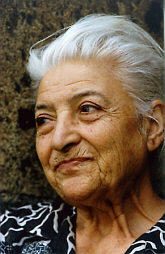 The citadel on top of the volcanic hill is about 10.5 hectares in size, but the entire city is believed to have covered 200 hectares at its greatest extent, housing up to 50,000 people (making it a huge metropolis in those days).; Nearby spring-fed marshes and lakes suggest the extent of the wildlife that covered the area up to the bases of Mount Aragats and Ararat.; The area was rich in water, mineral and hunting resources at the time of the development of Metsamor.; The nearby Metsamor river provided both transportation and the first irrigation source recorded in Armenia. The citadel on top of the volcanic hill is about 10.5 hectares in size, but the entire city is believed to have covered 200 hectares at its greatest extent, housing up to 50,000 people (making it a huge metropolis in those days).; Nearby spring-fed marshes and lakes suggest the extent of the wildlife that covered the area up to the bases of Mount Aragats and Ararat.; The area was rich in water, mineral and hunting resources at the time of the development of Metsamor.; The nearby Metsamor river provided both transportation and the first irrigation source recorded in Armenia.
;
Excavations began at Metsamor in 1965 and are still in progress, led by Professor Emma Khanzatian.; The most recent excavation work occurred in the summer of 1996, along the inner cyclopic wall.; Excavations have shown strata of occupancy going back to the Neolithic period (7,000-5,000 BC), but the most outstanding features of the site were constructed during the early, middle and late Bronze Ages (5000-2,000 BC).; Inscriptions found within the excavation go back as far as the Neolithic period , and a sophisticated pictograph form of writing was developed as early as 2000-1800 BC.; The "Metsamor Inscriptions" have a likeness to later scripts, which influenced Mashtots' alphabet (see Evolution of the Armenian Alphabet).
;
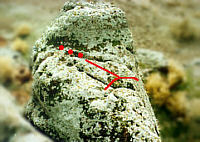 The excavation has uncovered a large metal industry, including a foundry with 2 kinds of blast furnaces (brick and in-ground).; Metal processing at Metsamor was among the most sophisticated of its kind at that time; the foundry extracted and processed high-grade gold, copper, several types of bronze, manganese, zinc, strychnine, mercury and iron. Metsamor’s processed metal was coveted by all nearby cultures, and found its way to Egypt, Central Asia and China.; The iron smelting process was not advanced in Metsamor, probably due to the vast quantities of pure bronze alloys at hand, and Metsamor primarily mined and sold iron ore to neighboring cultures which took better advantage of its properties.; One of the early examples of R&D not getting past the lab door.; It is not until the Early Iron Age that Metsamor took full advantage of the high-grade iron ore it had been selling to others. The excavation has uncovered a large metal industry, including a foundry with 2 kinds of blast furnaces (brick and in-ground).; Metal processing at Metsamor was among the most sophisticated of its kind at that time; the foundry extracted and processed high-grade gold, copper, several types of bronze, manganese, zinc, strychnine, mercury and iron. Metsamor’s processed metal was coveted by all nearby cultures, and found its way to Egypt, Central Asia and China.; The iron smelting process was not advanced in Metsamor, probably due to the vast quantities of pure bronze alloys at hand, and Metsamor primarily mined and sold iron ore to neighboring cultures which took better advantage of its properties.; One of the early examples of R&D not getting past the lab door.; It is not until the Early Iron Age that Metsamor took full advantage of the high-grade iron ore it had been selling to others.
;
Illustration: Metsamor Inscriptions
The astronomical observatory predates all other known observatories in the ancient world-- that is, observatories that geometrically divided the heavens into constellations and assigned them fixed positions and symbolic design.; Until the discovery of Metsamor it had been widely accepted that the Babylonians were the first astronomers.; The observatory at Metsamor predates the Babylonian kingdom by 2000 years, and contains the first recorded example of dividing the year into 12 sections.; Using an early form of geometry, the inhabitants of Metsamor were able to create both a calendar and envision the curve of the earth.
Hours, Ticket Price; The museum and site are open from 10:00-17:00 Tues-Sun.; In winter the museum opens at 11:00. Admission is 100 AMD, guided tour another 100 AMD (we suggest an additional tip of another 500 AMD per person in the tour: they’re getting 2000 AMD a month as salary, and receive no support for keeping the site and museum going).
Guided Tour; The museum offers guided tours in Armenian and Russian.; The self-guided tour we describe is provided as a short translation, but the details (and wonderful enthusiasm for their site) cannot be translated and need to be taken in person.; This tour is worth finding a translator or using your rough Armenian and hand gestures--the two guides we had are the most thorough and engaging we have found in Armenia.; Even without the language, you’ll get the gist of it, and feel you were there 6000 years ago.
 TOP TOP
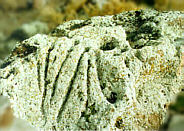 Basics Basics
Getting In
Metsamor is located 6 kilometers from the Ada Blur site via the Aratashen/Lenughi-Taronik road.; This is the same road you arrived in Aratashen on.; It is 1 kilometer West of the village of Taronik.
By Car, Taxi: Beginning from Ada Blur, back track to the Aratashen-Taronik road, and turn R.; One kilometer beyond you will see a road that intersects yours and leads to Hoktemberian.; Continue forward.; After 1.4 kilometers you will reach Taronik village.; Continue another 1.3 kilometers to the end to the village (always going forward if you see optional turns), and; just past an electrical tower and a large rusting tower, there will be a; road on your left.
That is the Metsamor road.; Turn L, and follow it as it skirts along a large earthen ditch (part of the Metsamor river). You can already spy the museum and hill in the upper right of your view.; 800 meters from the turnoff you will reach a low bridge. Cross it and proceed 200 meters to the gates of the site.; There is a small parking lot within the fencing.; If the site has other visitors, park here and walk to the museum ahead of you.; Otherwise, continue forward past the marshland and pond, and follow the road as it winds to the left to the top of the hill, about; meters to the front entrance.
;
There are no taxis from Aratashen to Metsamor, but you can probably get a villager to drive you (barter for petrol and an extra 1000 AMD).; They don’t work on schedules, so plan on waiting a bit.; It isn’t a bad hike if you’ve got your walking shoes on.
;
By Bus, YT, On Foot; There is a private Echmiadzin-Taronik bus (150 AMD one-way Echmiadzin-Taronik) that goes directly to the villages nearest all three sites.; It; originates at the Echmiadzin Avtokayan, and travels between 07:30 and 17:00-- when it has enough passengers (i.e. it has no set schedule; when it fills up, it leaves).;; Another departs from Taronik about 9:30 a.m. and travels via Aratashen, Lenughi and Atarbekian.
From Aratashen, the bus stop is about 200 meters west of the river bridge (ask for the "avtobusi kangarr depi Taronik" ³íïáµáõëÇ Ï³Ý·³é ¹»åÇ î³ñûÝÇÏ).; Tell the bus driver you want to get off at Metsamor Museum, ("yes uzum em ichnel Metsamor Tangaran" »ë áõ½áõÙ »Ù ÇçÝ»É Ø»Í³Ùá ä³Ý·³ñ³Ý).
Where to Eat/Where to Stay:
Homestay: Taronik is a good village for resting or eating.; It is one of the larger villages in the area, and the excavation workers live there.; They can point you in the right direction for bed and hearth in the village ($10-12 per night, includes three meals).
;
Lodging: 1.5 kilometers from the excavation turnoff, going west (away from Taronik and towards Hoktemberian), is the newly renovated "Litch Motel" (Lake Motel, Tel: (374-37) 5-00-44, ask for Bingio), with 7 bright and comfortable units, a lake to call your own and one of the best views of Ararat we’ve seen, unspoiled by urban growth.; They have cable TV, an International telephone connection, central heat and air conditioning, hot showers, and the freshest food at their pier restaurant.; At $15-25 dollars a room (double occupancy), they beat anything in Yerevan.; Come summer they plan to install a sauna and deluxe rooms (still a very reasonable $50 per room, double occupancy).
;
Setraki Restaurant/motel (Tel: Yerevan: (3741) 27-73-69, ask for Spartak) is located on Aknalich (Akna Lake), 700 meters from Lake Motel entrance (turn left on side street at a rock wall, go 200 meters, green wire gate is on left).; 10 cottages in wooded area, no phone, but swimming pool, hot water, air conditioning and central heat, beautiful walks through wooded area up to edge of lake.; $50-70 for two people, meals included.
;
In Echmiadzin, the Van Restaurant/Motel (Tel: (374-37) 4-80-24, ask for Valodia, David or Arsen) offers 6 suites with private entrances off the main dining area for $25 (double occupancy), and 2 deluxe suites on the second floor for $50 (double occupancy).; Full dinner and breakfast is an additional $10-15 per person.; Valodia worked for Intourist and built the complex on Swedish motels he saw as a guide.; The results are quite good.; To get to the Van, take the exit off Echmiadzin Highway by the Ferris wheel, and follow the road to the right, the complex is about 1 kilometer from the turn off, on your right.
 TOP TOP
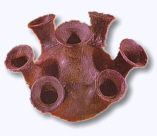 Metsamor Overview Metsamor Overview
The complex you are in was a large urban settlement which occupied an area of 10.5 hectares and consisted of a citadel within the inner cyclopic stone walls and an observatory at the farthest point from the museum, on the edge of the rocky hill (ca. 5th-4th millennium BC).; The fortress further encompassed a series of oval shaped dwellings with adjacent out buildings.; By the Late Bronze Age a more pronounced class system had occurred, shown by burial artifacts uncovered at royal tombs.
During the Middle Bronze Period (late 3rd to mid 2nd millennium BC) there was a surge of urban growth and a development of complex architectural forms which extended the boundaries of the settlement to the area below the hill.; Basically, that area within the inner cyclopic walls are the older city, and that beyond represent newer areas.; By the 11th c. BC the central city occupied the lowlands stretching to Lake Akna, and covered 100 hectares (247 acres).
;
About 500 meters southeast of the citadel is the location of the traditional necropolis (town dwellings), which covered an additional 100 hectares of land.; With a population of 50,000, Metsamor rivaled in size the largest cities in the world at that time.
;
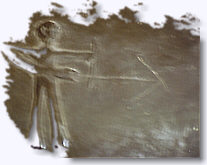 Another 70-80 hectares (170-200 acres) next to the Necropolis comprises the main burial site, where thousands of people were buried in simple graves and large burial mounds.; Once uncovered, these graves revealed an underlying layer of crushed-stone which further revealed large mausoleums built from red tuff, encircled by a series of cromlechs (monoliths of arched stone).;; What the excavators uncovered in the process was both a history of Metsamor’s burial rituals and a concern for hiding wealthy tombs.; Like the Pharaohs buried in the Valley of the Kings, Metsamor’s rulers tried to thwart grave robbers by hiding; the locations of royal tombs.; Fortunately the grave robbers at Metsamor were not as lucky as those in Egypt, and the Mausoleums revealed intact and richly adorned burial vaults, giving us an excellent glimpse into the traditions for preparing the body for the afterlife. Another 70-80 hectares (170-200 acres) next to the Necropolis comprises the main burial site, where thousands of people were buried in simple graves and large burial mounds.; Once uncovered, these graves revealed an underlying layer of crushed-stone which further revealed large mausoleums built from red tuff, encircled by a series of cromlechs (monoliths of arched stone).;; What the excavators uncovered in the process was both a history of Metsamor’s burial rituals and a concern for hiding wealthy tombs.; Like the Pharaohs buried in the Valley of the Kings, Metsamor’s rulers tried to thwart grave robbers by hiding; the locations of royal tombs.; Fortunately the grave robbers at Metsamor were not as lucky as those in Egypt, and the Mausoleums revealed intact and richly adorned burial vaults, giving us an excellent glimpse into the traditions for preparing the body for the afterlife.
;
Among the artifacts uncovered in the royal tombs were evidences of great wealth; gold, silver and bronze jewelry and adornments were found over and next to the body, which was placed in a sitting fetal position in a large stone sarcophagus (early Metsamor) or lying in a casket (late Metsamor).; The bodies were laid out with their feet oriented towards the East, so they could greet the sun and follow it to the afterlife in the West.; Included in the vaults were the skeletal remains of horses, cattle, domesticated dogs and humans--presumed to be servants or slaves to the deceased.; The sacrifice of slaves and animals was a common feature of burial rituals during the Bronze and Early Iron Age, as they were considered necessary to assist their master in the next life.; In addition to jewelry, pottery and tools, excavators discovered pots filled with grape and pear piths, grains, wine and oil.; The fruit piths are a prominent part of the food offerings, and considered a necessary part of the funeral rites.
;
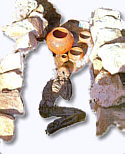 Other funeral objects discovered were rare amethyst bowls, ornamented wooden caskets with inlaid covers, glazed ceramic perfume bottles, and ornaments of gold, silver and semiprecious stones, and paste decorated with traditional mythological scenes typical of local art traditions.; Egyptian, Central Asian and Babylonian objects were also found at the site, indicating that from earliest of times Metsamor was on the crossroads of travel routes spanning the Ararat plain and linking Asia Minor with the North Caucasus and Central Asia.; By the early Iron Age Metsamor was one of the "royal" towns, an administrative-political and cultural center in the Ararat Valley. Other funeral objects discovered were rare amethyst bowls, ornamented wooden caskets with inlaid covers, glazed ceramic perfume bottles, and ornaments of gold, silver and semiprecious stones, and paste decorated with traditional mythological scenes typical of local art traditions.; Egyptian, Central Asian and Babylonian objects were also found at the site, indicating that from earliest of times Metsamor was on the crossroads of travel routes spanning the Ararat plain and linking Asia Minor with the North Caucasus and Central Asia.; By the early Iron Age Metsamor was one of the "royal" towns, an administrative-political and cultural center in the Ararat Valley.
;
By looking at the uncovered layers of excavated areas, you can also see traces of wars, devastation and fire. At the most recent excavation, a mass of bones were uncovered, piled one upon the other.; Piled outside the citadel wall, the bodies were dumped by survivors of a cataclysmic event (a siege or plague).;;; A complete destruction of the city is dated to the Urartian conquest in the 8th c BC.; Immediately following its destruction the Urartian conquerors rebuilt the site, including the cyclopean walls.; Afterwards Metsamor became a subject city to the Urartians and later, the Armenian kings.;; The city continued to be inhabited through the Hellenic period and the Middle Ages to a sudden end in the 17th c CE.; Excavations from these periods can still be seen on the hilltop and its eastern slope, as well as; by glazed earthenware and luxury items now housed in the museum.; Special among these are coins excavated from the Medieval period; they include the coin of Levon II (1270-1289), coins from the Khulavites mines minted in Tabriz (16th c) and West European 13-14th cc coins.
;
The largest and most developed of the three excavations on this tour, Metsamor’s importance is best appreciated by first visiting the museum before exploring the site.
 TOP TOP
Next 
|
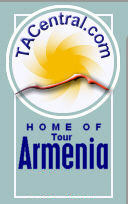


 The citadel on top of the volcanic hill is about 10.5 hectares in size, but the entire city is believed to have covered 200 hectares at its greatest extent, housing up to 50,000 people (making it a huge metropolis in those days).; Nearby spring-fed marshes and lakes suggest the extent of the wildlife that covered the area up to the bases of Mount Aragats and Ararat.; The area was rich in water, mineral and hunting resources at the time of the development of Metsamor.; The nearby Metsamor river provided both transportation and the first irrigation source recorded in Armenia.
The citadel on top of the volcanic hill is about 10.5 hectares in size, but the entire city is believed to have covered 200 hectares at its greatest extent, housing up to 50,000 people (making it a huge metropolis in those days).; Nearby spring-fed marshes and lakes suggest the extent of the wildlife that covered the area up to the bases of Mount Aragats and Ararat.; The area was rich in water, mineral and hunting resources at the time of the development of Metsamor.; The nearby Metsamor river provided both transportation and the first irrigation source recorded in Armenia. 


 Another 70-80 hectares (170-200 acres) next to the Necropolis comprises the main burial site, where thousands of people were buried in simple graves and large burial mounds.; Once uncovered, these graves revealed an underlying layer of crushed-stone which further revealed large mausoleums built from red tuff, encircled by a series of cromlechs (monoliths of arched stone).;; What the excavators uncovered in the process was both a history of Metsamor’s burial rituals and a concern for hiding wealthy tombs.; Like the Pharaohs buried in the Valley of the Kings, Metsamor’s rulers tried to thwart grave robbers by hiding; the locations of royal tombs.; Fortunately the grave robbers at Metsamor were not as lucky as those in Egypt, and the Mausoleums revealed intact and richly adorned burial vaults, giving us an excellent glimpse into the traditions for preparing the body for the afterlife.
Another 70-80 hectares (170-200 acres) next to the Necropolis comprises the main burial site, where thousands of people were buried in simple graves and large burial mounds.; Once uncovered, these graves revealed an underlying layer of crushed-stone which further revealed large mausoleums built from red tuff, encircled by a series of cromlechs (monoliths of arched stone).;; What the excavators uncovered in the process was both a history of Metsamor’s burial rituals and a concern for hiding wealthy tombs.; Like the Pharaohs buried in the Valley of the Kings, Metsamor’s rulers tried to thwart grave robbers by hiding; the locations of royal tombs.; Fortunately the grave robbers at Metsamor were not as lucky as those in Egypt, and the Mausoleums revealed intact and richly adorned burial vaults, giving us an excellent glimpse into the traditions for preparing the body for the afterlife.  Other
Other